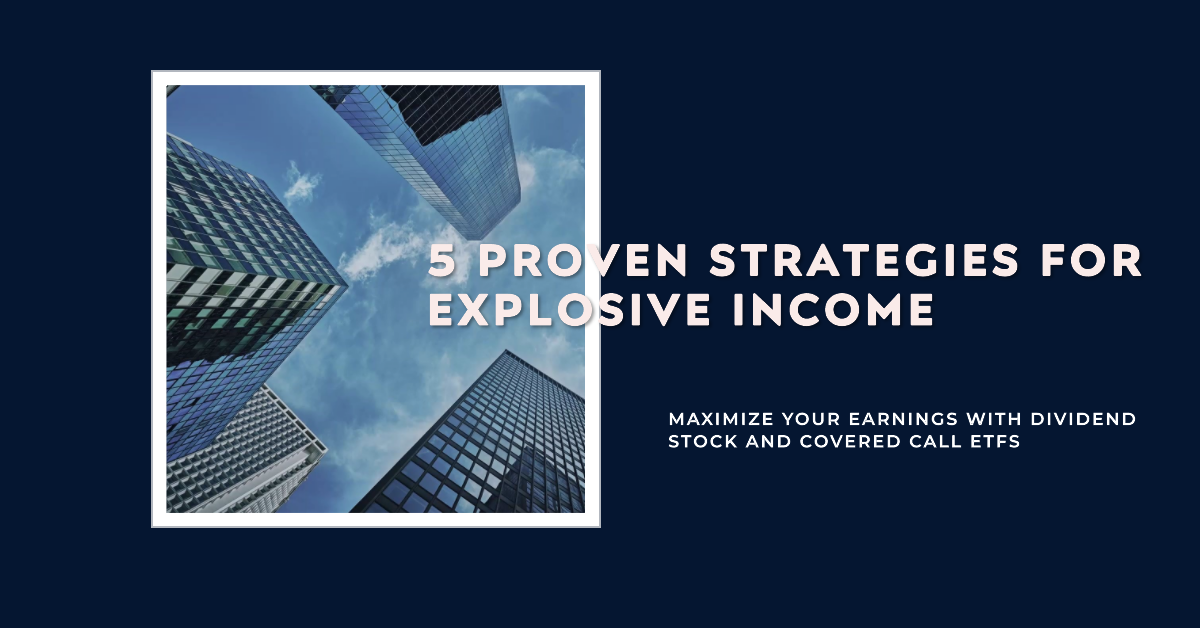Table of Contents
In the world of investment, the quest for income is an enduring pursuit. Whether you’re a seasoned investor or just starting your financial journey, the allure of generating consistent and substantial income from your investments is undeniable. Enter dividend stocks and covered call ETFs—two powerful financial instruments that can help you achieve explosive income growth. In this article, we’ll explore these strategies and provide you with five proven approaches to supercharge your investment income.
Understanding Dividend Stocks
Dividend stocks are shares of companies that distribute a portion of their profits to shareholders in the form of dividends. These dividends are typically paid on a regular basis, such as quarterly or annually. Investing in dividend stocks offers several advantages:
- Steady Income: Dividend payments provide a reliable stream of income, which can be especially beneficial for retirees or those seeking passive income.
- Long-Term Growth: Many dividend-paying companies have a history of stability and growth, making them attractive for long-term investors.
- Compounding Effect: Reinvesting dividends can lead to substantial wealth accumulation over time.
Some well-known companies with dividend stocks include Coca-Cola, which has a history of consistently increasing its dividend, and tech giant Apple, which started paying dividends in recent years.
Covered Call ETFs Explained
Covered call ETFs are a unique breed of exchange-traded funds (ETFs) designed to generate income by writing (selling) call options on a basket of underlying assets, such as stocks. Here’s how they work:
- The ETF manager owns a portfolio of stocks.
- They write call options on these stocks, essentially agreeing to sell them at a predetermined price (the strike price) if the option buyer chooses to exercise the option.
- In exchange for writing these call options, the ETF collects premiums from option buyers, which become part of the fund’s income.
A popular example of a covered call ETF is the Global X NASDAQ-100 Covered Call ETF (QYLD), which generates income by selling covered calls on the NASDAQ-100 Index.
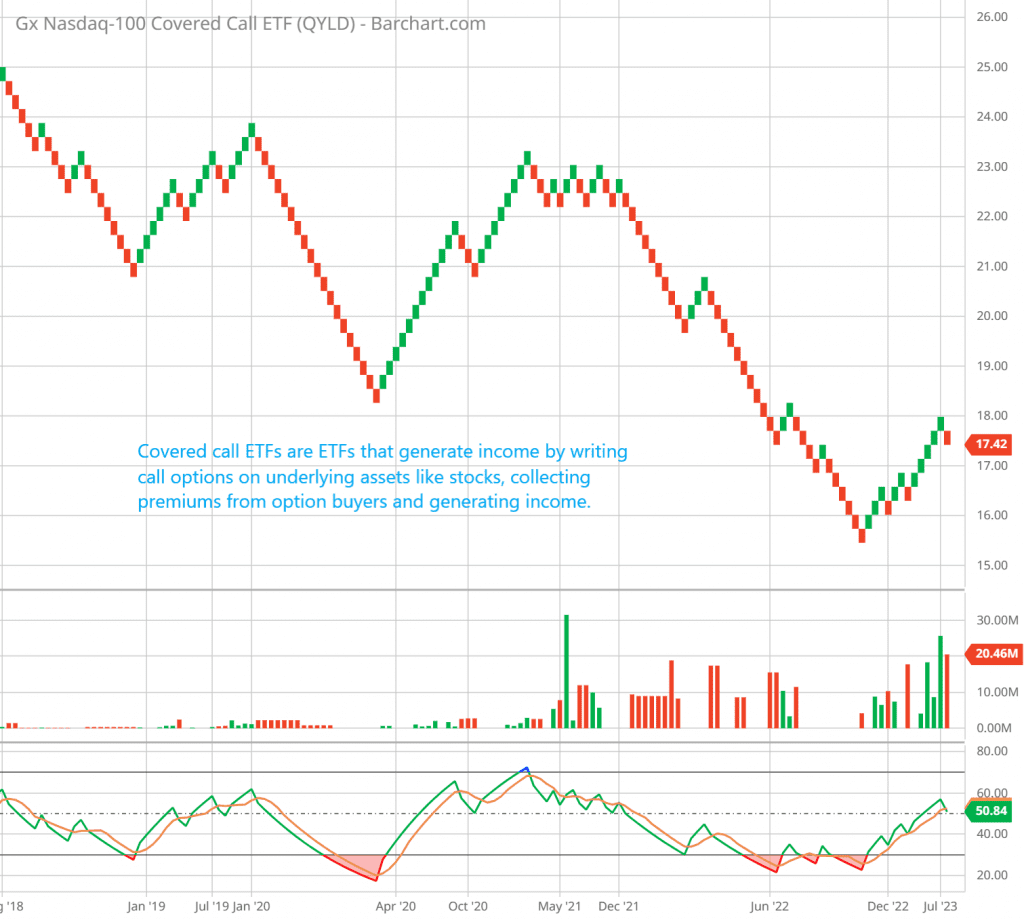
Proven Strategies for Explosive Income
Now that we’ve covered the basics, let’s delve into five proven strategies for achieving explosive income through dividend stocks and covered call ETFs.
Strategy 1: Dividend Stock Selection
Choosing the right dividend stocks is crucial for building a reliable income stream. Here are some factors to consider:
a. Consistent Dividend Growth
Look for companies that have a history of consistently increasing their dividend payments year after year. These companies often demonstrate financial stability and a commitment to returning value to shareholders. One such example is Johnson & Johnson (JNJ), a multinational healthcare corporation. JNJ has a remarkable track record of dividend growth for over 50 years, making it a favorite among income-oriented investors.
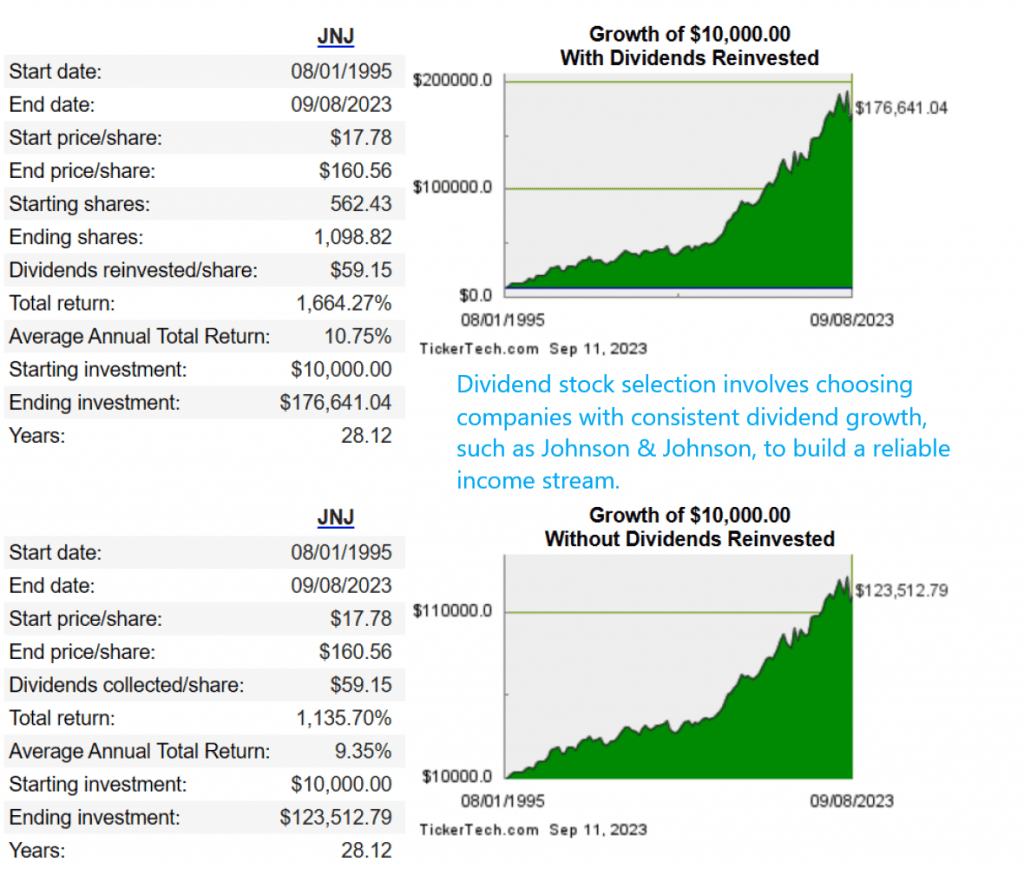
b. Healthy Financials
Assess the financial health of the companies you’re considering. Companies with strong balance sheets and cash flows are better positioned to maintain and grow their dividends. Microsoft (MSFT) is an excellent example of a technology giant with a solid financial foundation and a growing dividend.
c. Dividend Yield
While a high dividend yield may seem attractive, it’s essential to analyze it in context. Extremely high yields can sometimes be a signal of financial distress or an unsustainable payout ratio. For instance, AT&T (T) has historically offered a high dividend yield due to its status as a telecommunications giant, but investors should be aware of the company’s debt levels and challenges in the industry.
Unleash Wealth with Covered Call ETFs and Dividend Stocks: 5X Income Boost
Strategy 2: Writing Covered Calls
Writing covered calls is a strategy that involves selling call options on stocks you own within your portfolio. By doing so, you can generate additional income through option premiums. Here’s an example:
Suppose you own shares of Apple Inc. (AAPL). You decide to write covered call options with a strike price of $150 per share, which is slightly above the current market price of $145 per share. An investor who believes AAPL will rise to $150 or higher might buy your call option.
For writing this call option, you receive a premium upfront. If AAPL’s stock price remains below $150 by the option’s expiration date, the option expires worthless, and you keep the premium as income. If AAPL surpasses $150, you might have to sell your shares at that price, but you still keep the premium.
This strategy can be particularly effective for generating consistent income, especially in a sideways or slightly bullish market.
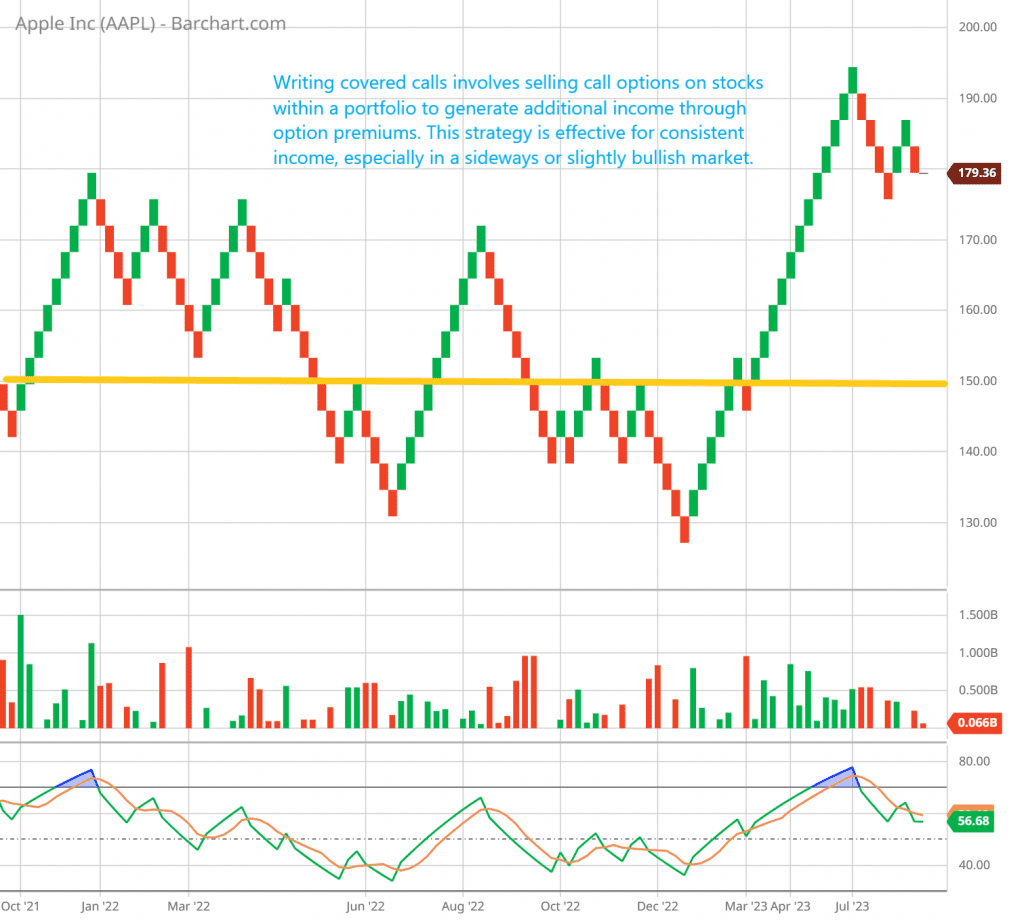
Selling ATM Covered Calls: Unlocking Easy Ways to Make Money in the Stock Market
Strategy 3: Diversification
Diversification is a fundamental risk management strategy. It involves spreading your investments across different sectors, industries, and asset classes. By doing so, you can reduce the impact of poor performance in any single investment. Here’s an example of how diversification can work:
Imagine you have $100,000 to invest. Instead of putting it all into a single stock, you decide to diversify:
- $40,000 in dividend-paying stocks across various sectors (e.g., technology, healthcare, consumer goods).
- $30,000 in a covered call ETF that tracks a broad stock market index.
- $20,000 in bonds or other fixed-income investments.
- $10,000 in a real estate investment trust (REIT).
Diversification can help balance risk and provide more stable income, even if one of your investments experiences a downturn.
Diversified Portfolio Mastery: 7 Steps to Building Wealth
Strategy 4: Reinvesting Dividends
Reinvesting dividends can accelerate your wealth accumulation over time. Instead of taking cash dividends, use them to purchase more shares of the same investment. Here’s how it works:
Let’s say you own 1,000 shares of The Coca-Cola Company (KO), and KO pays an annual dividend of $1 per share. If you choose to reinvest your dividends, you’ll receive an additional 40 shares of KO stock (assuming a share price of $25). Over time, the number of shares you own increases, leading to larger dividend payments in the future. This compounding effect can significantly boost your wealth over the years.
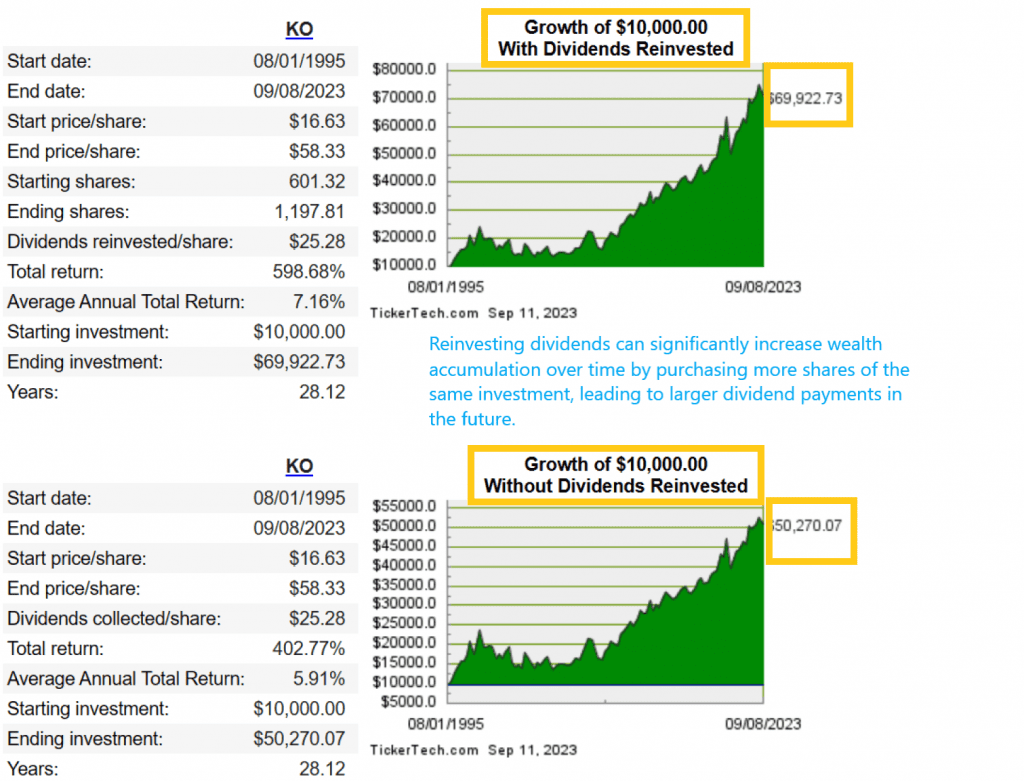
Dividend Reinvestment Plans (DRIPs): How to Grow Your Investment Portfolio
Strategy 5: Risk Management
Effective risk management is essential in any investment strategy. Here are some key considerations:
- Set Clear Goals: Define your investment goals and risk tolerance upfront. Understand your financial objectives and the timeline for achieving them.
- Regularly Review Holdings: Periodically assess your portfolio to ensure it aligns with your goals. Make adjustments as needed to rebalance and mitigate risk.
- Understand Covered Call Risks: While covered call strategies can generate income, they come with the risk of potentially missing out on significant stock price gains if the market experiences a rapid rally. Strike a balance between income generation and capital appreciation.
By implementing these five strategies—careful dividend stock selection, covered call writing, diversification, reinvesting dividends, and effective risk management—you can build a robust investment plan tailored to your financial goals. Whether you’re looking to secure your retirement or achieve financial independence, these strategies can help you achieve explosive income growth over time.
Frequently Asked Questions (FAQs)
1. What are dividend stocks, and how do they work?
- Dividend stocks are shares of companies that distribute a portion of their profits to shareholders in the form of dividends. These dividends are typically paid on a regular basis, such as quarterly or annually. Investors receive cash payments based on the number of shares they own.
2. Are all dividend stocks the same?
- No, dividend stocks vary in terms of dividend yield, dividend growth history, and sector. Some companies have a long history of consistent dividend growth, while others may offer higher yields but with more risk.
3. What is a dividend yield, and why is it important?
- The dividend yield is a percentage that represents the annual dividend payment as a portion of the stock’s current market price. It’s essential because it helps investors assess the income potential of a dividend stock. However, a high yield should be evaluated in the context of the company’s financial health.
4. What are covered call ETFs, and how do they generate income?
- Covered call ETFs are exchange-traded funds that generate income by writing (selling) call options on a basket of underlying assets, such as stocks. They collect premiums from option buyers, which become part of the fund’s income. If the call options are exercised, the ETF may also sell the underlying assets at the agreed-upon strike price.
5. How can I start investing in dividend stocks?
- To invest in dividend stocks, you’ll need a brokerage account. Research and select companies that align with your investment goals, taking into account their dividend history, financial health, and sector performance. Buy shares through your brokerage account.
6. Are there risks associated with covered call ETFs?
- Yes, covered call ETFs come with risks. If the underlying assets experience a significant price increase, the ETF’s potential gains may be capped at the strike price of the call options. Additionally, there’s the risk that the underlying assets may be sold if the options are exercised.
7. Can I lose money with dividend stocks and covered call ETFs?
- Like all investments, dividend stocks and covered call ETFs carry some level of risk. Stock prices can fluctuate, affecting the value of your investments. However, both strategies are designed to provide income and can be managed to mitigate risks.
8. How can I diversify my dividend stock portfolio?
- Diversification involves spreading your investments across different sectors and industries to reduce risk. You can achieve diversification by investing in dividend stocks from various sectors, such as technology, healthcare, consumer goods, and finance.
9. Should I reinvest dividends or take them as cash?
- Whether to reinvest dividends or take them as cash depends on your financial goals. Reinvesting dividends can accelerate wealth accumulation through compounding. Taking dividends as cash provides immediate income. Consider your income needs and long-term objectives when deciding.
10. Are there tax implications for dividend income and covered call premiums?
– Yes, both dividend income and covered call premiums can have tax implications. The tax treatment can vary based on your country’s tax laws and your individual circumstances. It’s advisable to consult with a tax professional to understand how these income sources will affect your tax liability.
Remember that investing always carries some level of risk, and it’s essential to conduct thorough research, consider your financial goals, and, if necessary, seek advice from a financial advisor before making investment decisions.
Common Pitfalls and How to Avoid Them
1. Overconcentration in a Single Stock or ETF
Pitfall: Placing too much of your investment capital in a single dividend stock or covered call ETF can expose you to significant risk if that particular asset underperforms or faces adverse market conditions.
Avoidance Strategy:
- Diversify Your Portfolio: Spread your investments across different stocks, sectors, and asset classes. Diversification helps reduce the impact of poor performance in any single investment.
- Set Allocation Limits: Establish guidelines for the maximum percentage of your portfolio that can be allocated to a single stock or ETF. This ensures that you don’t overcommit to any one asset.
2. Chasing Extremely High Yields
Pitfall: Investing solely based on the highest dividend yields can lead to disappointment. Exceptionally high yields may indicate financial distress or an unsustainable payout ratio.
Avoidance Strategy:
- Evaluate the Sustainability: Research the company’s financial health and earnings history. A sustainable dividend yield is better than a temporarily high one.
- Consider Dividend Growth: Companies with a history of increasing dividends may offer more stable income and long-term growth potential.
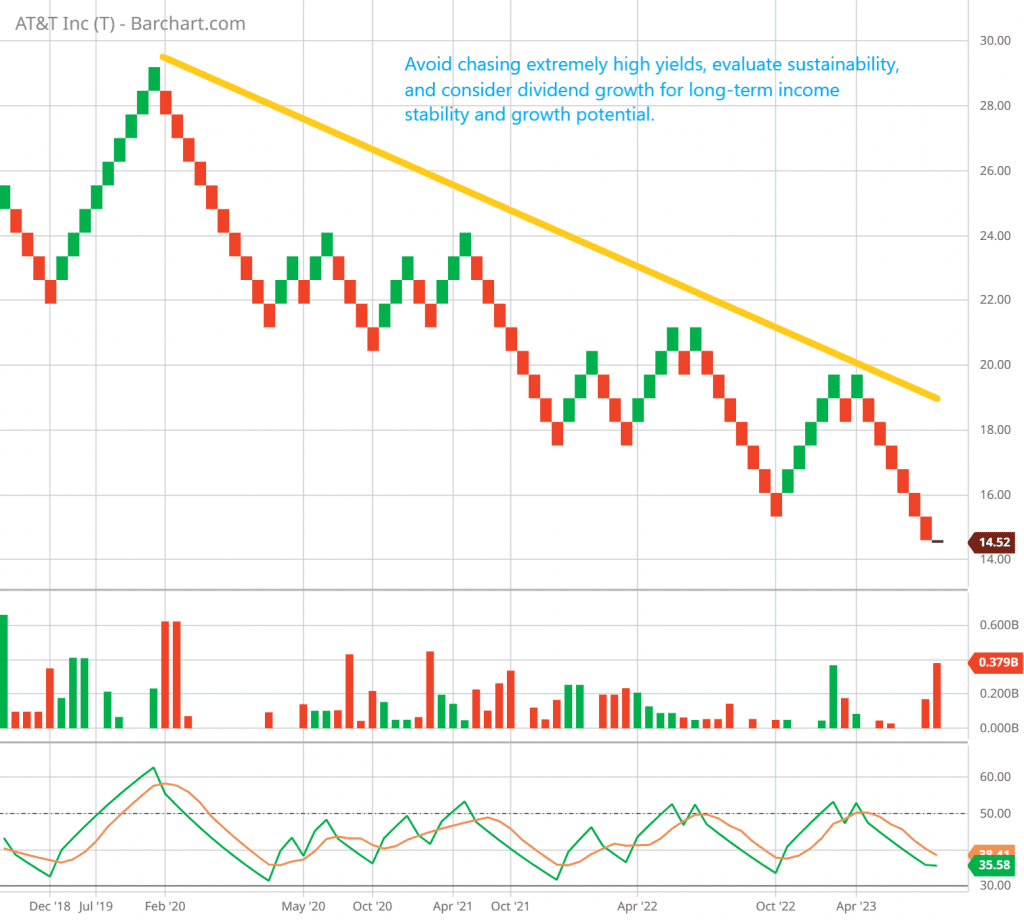
3. Lack of Research and Due Diligence
Pitfall: Failing to research your investments and understand the strategies you’re using can lead to poor decision-making and unexpected outcomes.
Avoidance Strategy:
- Educate Yourself: Invest time in learning about the companies you invest in and the mechanics of covered call strategies. Understanding the fundamentals is essential.
- Stay Informed: Keep up with market news and developments that may impact your investments. Regularly review financial reports and analyst assessments.
4. Neglecting Risk Management
Pitfall: Ignoring risk management can result in significant losses. Failing to assess your risk tolerance and set clear investment goals can lead to poor decision-making.
Avoidance Strategy:
- Define Your Goals: Clearly articulate your investment objectives, whether they are income generation, capital preservation, or growth. Align your portfolio with these goals.
- Regularly Review Holdings: Periodically assess your portfolio to ensure it continues to align with your goals and risk tolerance. Adjust your holdings as needed.
5. Not Monitoring Covered Call Positions
Pitfall: If you’re actively writing covered call options, not monitoring your positions can lead to missed opportunities or unexpected losses if the underlying assets experience significant price changes.
Avoidance Strategy:
- Stay Vigilant: Regularly monitor the performance of your covered call positions. Be prepared to adjust or roll over options if market conditions change.
- Have a Plan: Before writing a covered call, have a clear exit strategy in mind. Know when you will buy back the option or sell the underlying asset if needed.
6. Ignoring Tax Implications
Pitfall: Failing to consider the tax consequences of your investment decisions can lead to unexpected tax liabilities and reduce your overall returns.
Avoidance Strategy:
- Consult a Tax Professional: Work with a tax advisor who can provide guidance on the tax treatment of your dividend income and covered call premiums.
- Tax-Efficient Investing: Consider tax-efficient investment strategies, such as holding investments in tax-advantaged accounts like IRAs or 401(k)s.
By recognizing these common pitfalls and implementing effective avoidance strategies, you can navigate the world of dividend stocks and covered call ETFs with greater confidence and maximize your chances of achieving your income and investment goals while minimizing risks.
Certainly, let’s revise the conclusion without point number 5:
Conclusion
In the world of investments, where financial goals range from securing a comfortable retirement to achieving financial independence, the pursuit of consistent and substantial income is ever-present. The strategies of dividend stocks and covered call ETFs offer a compelling path towards achieving not just income but potentially explosive income growth. As we conclude our exploration of these strategies, here are the essential takeaways:
1. A World of Opportunity Awaits: Dividend stocks and covered call ETFs represent windows into a world of financial opportunity. They offer the promise of regular income, growth potential, and the ability to adapt to various market conditions.
2. The Power of Dividend Stocks: Dividend stocks are the stalwarts of income generation. By selecting companies with a history of dividend growth, you can tap into a steady stream of income that has the potential to increase over time. Companies like Johnson & Johnson and Microsoft exemplify this reliability.
3. The Covered Call Advantage: Covered call ETFs introduce a unique dimension to income generation by leveraging options contracts. By writing covered calls, you can receive option premiums while potentially benefiting from stock price appreciation. ETFs like QYLD are designed to harness the power of these strategies.
4. Proven Strategies for Explosive Income: The article has presented four proven strategies for maximizing income with dividend stocks and covered call ETFs. From prudent stock selection to diversification, reinvestment, and risk management, these strategies have been successfully employed by countless investors.
5. Common Pitfalls and How to Avoid Them: Recognizing the potential pitfalls, such as overconcentration, chasing high yields, and neglecting risk management, is the first step toward avoiding them. By diversifying your portfolio, conducting thorough research, and staying vigilant, you can steer clear of these traps.
6. Begin Your Journey: The world of dividend stocks and covered call ETFs is ripe with possibilities. Whether you’re looking to secure your retirement, create a nest egg for the future, or simply enjoy a more comfortable financial life, these strategies can help you get there.
In conclusion, generating explosive income through dividend stocks and covered call ETFs is not only feasible but also an exciting adventure in wealth-building. By selecting solid dividend-paying companies, utilizing covered call strategies, diversifying your portfolio, reinvesting dividends, and managing risks, you have the tools to build a robust investment plan tailored to your financial aspirations.
So, why wait? The time to embark on your journey to financial success is now. Start exploring these strategies today, and as you do, remember that the pursuit of financial goals is not just about numbers; it’s about the freedom to live life on your terms, secure your loved ones’ future, and embrace the opportunities that come your way. By taking action, you can transform these strategies into a reality that empowers you to achieve your dreams, one dividend and one covered call at a time. Your path to explosive income growth begins today.
